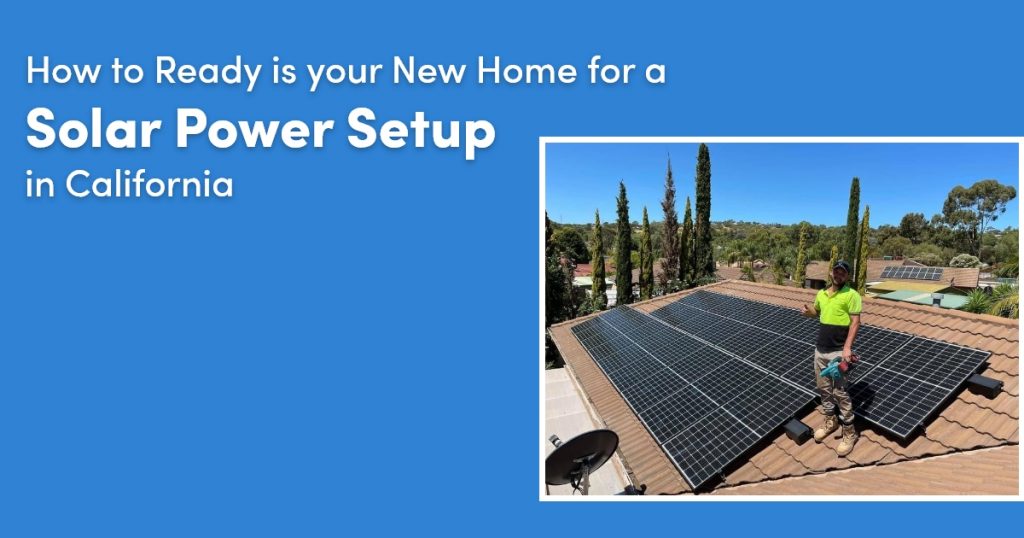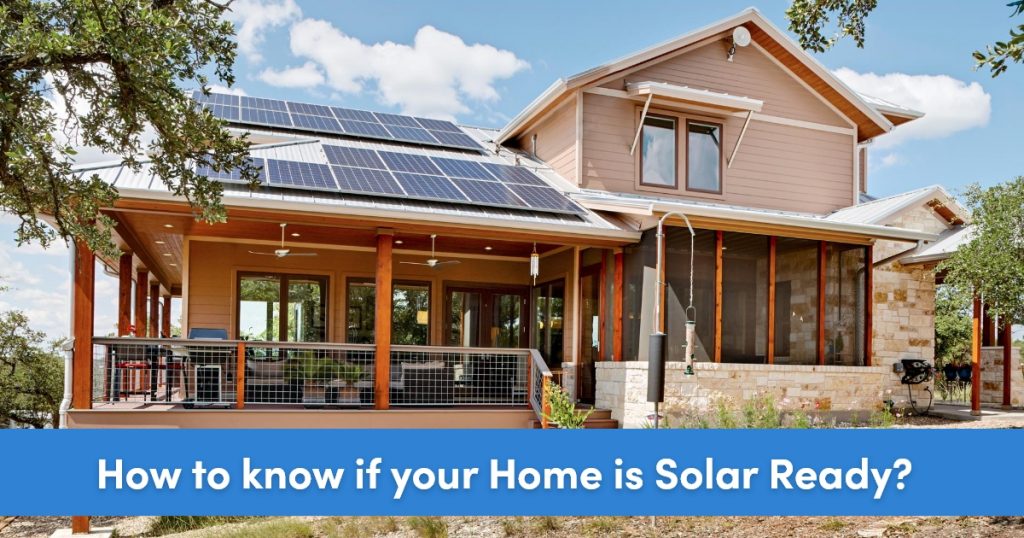How to Ready is your New Home for a Solar Power Setup in California.

When you build a new house, you have the option of starting from the ground up and saving thousands of dollars in utility bills over the years. A new build allows you to optimize your Solar Panels Setup, but you must first do your homework.
The easiest approach to avoid typical installation challenges or roadblocks is to work with your architect, builder, and solar specialist early in the planning phase, and we’re here to help you figure out how to make your home solar-ready.
Why is it important to Go solar power for new homes in California?
Solar Power in California is taking new heights every day. Solar panels are required on all single-family homes and multi-family homes up to three stories high under the California solar requirement. This means that, as long as the building is shorter than four stories, all apartment buildings, regardless of size, will be required to have rooftop solar panels.
What is Solar Ready Design Considerations for New Homes
For people who are building a new home, there are some additional considerations for making a solar-ready home or Solar Panels Setup. First and foremost, make sure that your roof is facing the direction that receives the most sunlight. This will help you to boost energy output by maximizing the quantity of sunlight your solar panels receive.
In terms of structure, make sure your contractor evaluates the wind loads on the rooftop solar equipment to ensure you have a sufficiently sturdy roof structure. It’s a good idea to double-check whether your roofing warranty covers rooftop solar installations. Installing solar-ready wiring in advance of your solar panels, including a wired conduit to the roof panels’ projected site, is another option.
Also Read: – Types of Solar Power System – You Need to Know.
How to Know if your Home is Solar Ready?

- Check your roof faces in the right direction.
We can assist you with this. Roofs with a northern facing angle receive the greatest sunshine throughout the day in the southern hemisphere, allowing a solar power system to reach its full potential.
- Make sure you have Pre-Wiring For Solar
We always recommend pre-wiring your solar system while your house is being built. Before the walls are gyp-rocked, we may easily pre-wire the house for solar, satisfying all Solar regulations. This is considerably easier and less expensive to install at the start of a project than thereafter, and it also assures that no solar cables are visible in your home.
- Check trees/shading on your property
While we don’t recommend pulling down any of our magnificent trees, you may find that trees shade your land and hinder solar panels from working. As a result, these poor trees may need to be relocated.
- Make necessary repairs
Solar panels are supposed to last 20 to 25 years, thus your roof will need to survive longer than your new panels. Examine the area for any broken tiles or potential leaks, and make any necessary repairs. You’ll also need to determine whether or not your roof can support the weight and size of a solar panel system.
- Get Electrical Panel Upgrade
Before adding solar panels, your home’s electrical panel may need to be improved. Upgrades are especially important in homes with an older or out-of-date electrical system. An inverter that works with your solar panels will be linked to your breaker when you finally install the panels.
- May way for solar inverter
The beautiful thing about installing solar panels on a new home is that you get to choose where all of your utilities will be located. The inverter should be placed as close to the switchboard as possible, according to our recommendations. Typically, we recommend mounting them on a southern wall or within your garage, which is also an excellent location for storing a battery in the future.
What Kind of Roof Do I Need For Solar Panels?
Making sure you have the right type of roof is an important component of making your home “solar ready.” To do so, be sure your roof is structurally solid and capable of supporting the additional weight that the solar panels will add. Most solar panel contractors will refuse to install a PV system on a slate or cedar-shingled roof. While it is possible, it is usually riskier and more expensive. Get in touch with Solar Installation in Fresno, CA.
Consider the age of your roof and whether it is structurally solid and built of a material compatible with solar panels before starting your project. If your roof does not satisfy all of these criteria, you may either replace it before going solar or choose a ground-mounted system or a solar carport instead.
Conclusion –
You can ensure that your home is ready for a solar panel with little planning ahead of time. Not only will you be able to maximize the output of your system, but you will also be able to reduce the cost of installation.
Find some Solar Power Companies in California; As a consequence, you’ll have solar panels that will last for at least 25 years and cost a fraction of what you’d pay now.